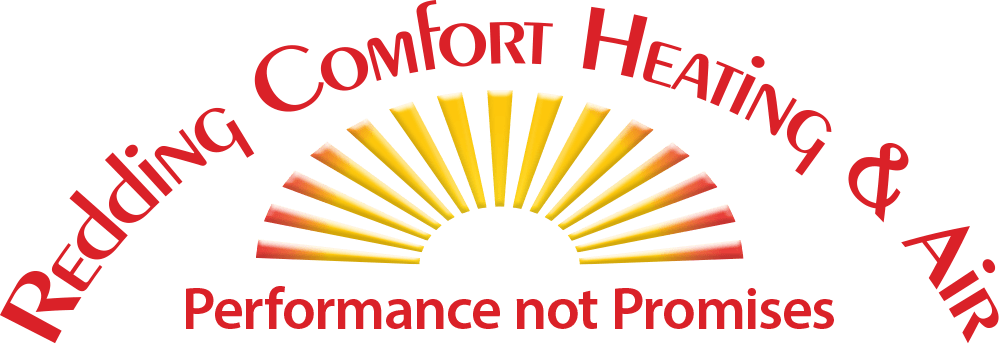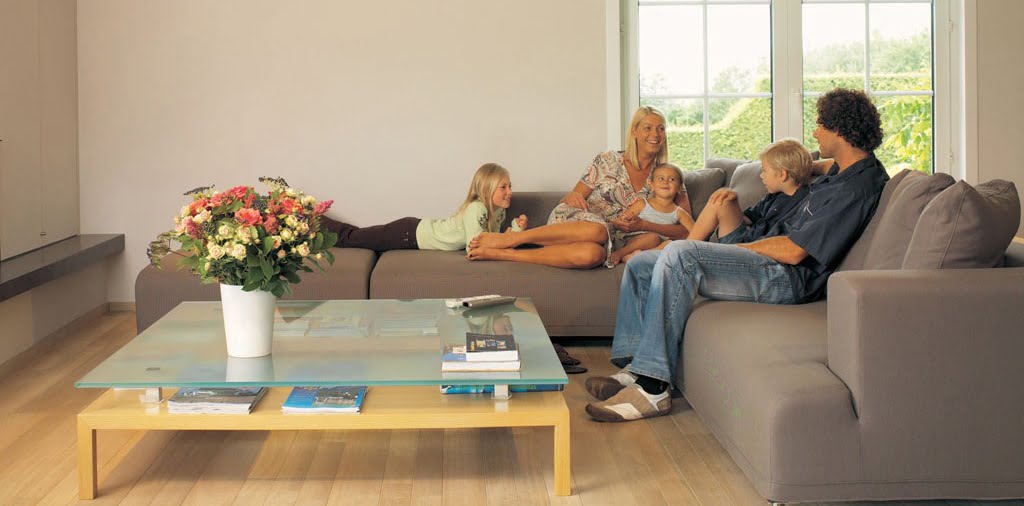Air Conditioner Installation & Heater Installation in Redding Ca
Repair or Replace?
At Redding Comfort Heating & Air, we pride ourselves on reliable products and great service. So when you’re faced with the choice between replacing or repairing part or all of your heating and cooling system, you can count on your local Bryant dealer to help you find a solution that’s affordable, keeps your family comfortable and makes long-term sense.
Every situation is unique, and your Bryant dealer will give you expert advice based on an inspection of your existing system, identifying maintenance needs and costs, and discussing your individual heating, cooling and air quality priorities. In general, here are some issues to keep in mind when deciding whether to repair your current equipment or upgrade to a new system:
Cost and Convenience
Cost is an immediate consideration – the up-front price of repairs will likely be less than installing a new model. But consider the age of your current system and the relative cost of repairing it: If your existing equipment is more than ten years old and the cost of repairs is more than a third of what a new system would cost, it may make more sense to replace it. (And if the repair bill approaches 50% of the cost of a replacement, an upgrade may be a better choice.)
If repairs are less than a third of the replacement cost and your system is less than ten years old, it may have many productive years ahead. Andeven 25-year-old equipment can still keep your home comfortable with proper maintenance and attention.
Of course, an older system is more likely to require repair going forward, so factor in the potential costs and inconvenience of keeping up an aging system. (And check your warranty terms and expiration, too!)
Efficiency and Long-Term Savings
It’s also important to look beyond the up-front price tag to the cost of the system over time. More energy efficient heating and cooling systems mean lower monthly utility bills, leading to savings you’ll reap year after year for the life of the system.
You can understand the heating efficiency of a furnace by its Annual Fuel Utilization Efficiency (AFUE), which measures the percentage of energy that’s actually used to heat your home. Most newer furnaces have an AFUE of 80% or more, and Bryant offers models up to 98.3%. If your current system is less than 80% efficient, you could save considerably on your monthly utilities with an upgrade.
For cooling with an air conditioner or heat pump, the measurement is Seasonal Energy Efficiency Ratio (SEER) – a higher SEER rating means greater energy savings. 13 SEER is the minimum currently required, and Bryant has models up to 20.5. Upgrading to a higher SEER rating means energy savings over the life of the system. For heat pumps in heating mode, look for a Heating Seasonal Performance Factor (HSPF) of over 10 for greater efficiencies. Bryant offers heat pumps with HSPF of up to 13.
Installing a more efficient system may also qualify you for tax credits, if you’re thinking about installing a geothermal system, or local utility rebates. Call Redding Comfort today for more information on Bryant Bonus or incentives we may have available in your area.
Indoor Air Quality
Your heating and cooling system can also play a role in maintaining good indoor air quality – your indoor environment is often more polluted than the outdoors, and the Environmental Protection Agency rates poor indoor air quality as a top environmental health concern.
You may want to consider adding a humidifier to make dry, winter air more comfortable to breathe, an air purifier unit to remove bacteria, viruses, pollen and mold from the indoor air, and a ventilator to ensure that fresh air is circulated into your home.
At Redding Comfort, we can help you understand the indoor air quality implications of your heating and cooling system, and replacement or upgrade options that may help you breathe a little easier.
The Bottom Line
Your heating and cooling system is one of the most expensive components of your home, and one of the most important – your family’s comfort depends on it. So the choice between replacing and repairing the system is a big one…and sometimes, if your furnace goes out in the dead of winter, or your air conditioning fails in the heat of August, the pressure to make the right decision is even more immediate.
It comes down to evaluating short-term costs versus long-term value, and making sure you understand the impact of energy savings over the life of the system while weighing concerns you may have over issues like air quality. But you have a reliable partner on your side. Redding Comfort will walk you through the pros and cons, and is committed to doing whatever necessary to deliver the right solution for you and your family.
When is it time to replace?
Certain telltale signs indicate it’s time to consider replacing heating and cooling equipment, or improving the performance of your overall system. It may be time to call a professional contractor to help you make a change if:
Your heat pump or air conditioner is more than 10 years old.
Consider replacing it with a unit that has earned the ENERGY STAR label. Installed correctly, these high-efficiency units can save up to 20 percent on heating and cooling costs.
Your furnace or boiler is more than 15 years old.
Consider replacing with an ENERGY STAR qualified furnace, which is 15% more efficient than a conventional furnace. If you have a boiler, consider replacing with an ENERGY STAR qualified boiler that is 5% more efficient than a new, standard model.
Your equipment needs frequent repairs and your energy bills are going up.
Your cooling or heating equipment might have become less efficient.
Some rooms in your home are too hot or too cold.
Improper equipment operation, duct problems or inadequate insulation could be the cause.
No one is home for long periods of the day and you do not have a programmable thermostat.
Install a programmable thermostat or have a good contractor install one and instruct you on its use — to start saving energy and money while they’re away or sleeping.
Your home has humidity problems.
Poor equipment operation, inadequate equipment, and leaky ductwork can cause the air to be too dry in the winter or too humid in the summer.
Your home has excessive dust.
Leaky ducts can pull particles and air from attics, crawl spaces and basements and distribute them throughout your house. Sealing your ducts may be a solution.
Your heating or cooling system is noisy.
You could have an undersized duct system or a problem with the indoor coil of your cooling equipment.
Heat & Cool Efficiently
As much as half of the energy used in your home goes to heating and cooling. So making smart decisions about your home’s heating, ventilating, and air conditioning (HVAC) system can have a big effect on your utility bills — and your comfort. Take these steps to increase the efficiency of your heating and cooling system:
Change your air filter regularly
Check your filter every month, especially during heavy use months (winter and summer). If the filter looks dirty after a month, change it. At a minimum, change the filter every 3 months. A dirty filter will slow down air flow and make the system work harder to keep you warm or cool — wasting energy. A clean filter will also prevent dust and dirt from building up in the system — leading to expensive maintenance and/or early system failure.
Tune up your HVAC equipment yearly
Just as a tune-up for your car can improve your gas mileage, a yearly tune-up of your heating and cooling system can improve efficiency and comfort
Install a programmable thermostat
A programmable thermostat is ideal for people who are away from home during set periods of time throughout the week. Through proper use of pre-programmed settings, a programmable thermostat can save you about $180 every year in energy costs.
Seal your heating and cooling ducts
Ducts that move air to-and-from a forced air furnace, central air conditioner, or heat pump are often big energy wasters. Sealing and insulating ductscan improve the efficiency of your heating and cooling system by as much as 20 percent — and sometimes much more.
Focus first on sealing ducts that run through the attic, crawlspace, unheated basement, or garage. Use duct sealant (mastic) or metal-backed (foil) tape to seal the seams and connections of ducts. After sealing the ducts in those spaces, wrap them in insulation to keep them from getting hot in the summer or cold in the winter. Next, look to seal any other ducts that you can access in the heated or cooled part of the house.
Consider installing ENERGY STAR qualified heating and cooling equipment
If your HVAC equipment is more than 10 years old or not keeping your house comfortable, have it evaluated by a professional HVAC contractor. If it is not performing efficiently or needs upgrading, consider replacing it with a unit that has earned the ENERGY STAR. Depending on where you live, replacing your old heating and cooling equipment with ENERGY STAR qualified equipment can cut your annual energy bill by more than $115. But before you invest in a new HVAC system, make sure that you have addressed the big air leaks in your house and the duct system. Sometimes, these are the real sources of problems rather than your HVAC equipment.
Ask about Proper Installation of your new equipment
Replacing your old heating and cooling equipment with new, energy-efficient models is a great start. But to make sure that you get the best performance, the new equipment must be properly installed. In fact, improper installation can reduce system efficiency by up to 30 percent – costing you more on your utility bills and possibly shortening the equipment’s life.

